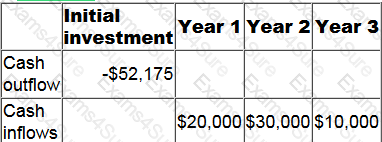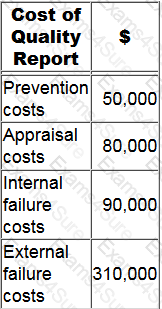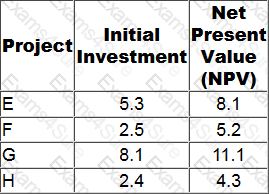Advanced Management Accounting
Last Update 5 days ago
Total Questions : 202
Advanced Management Accounting is stable now with all latest exam questions are added 5 days ago. Incorporating P2 practice exam questions into your study plan is more than just a preparation strategy.
P2 exam questions often include scenarios and problem-solving exercises that mirror real-world challenges. Working through P2 dumps allows you to practice pacing yourself, ensuring that you can complete all Advanced Management Accounting practice test within the allotted time frame.
Performance measures that monitor the extent to which a not-for-profit organization's objectives have been achieved are measures of:
SDF is a newly-established production company that is experiencing high staff turnover in its factory. The production department is studying the manufacturing process and its associated learning curve.
Which of the following statements is correct?
In an organization's transfer pricing system the selling division and the purchasing division each record a different price for the same transaction.
This is known as a:
The Chief Executive of a large manufacturing company has made the following comment.
"All of our competitors are using both just-in-time(JIT) and Total Quality Management (TQM) whereas we have never used either. Consequently we are lagging behind our competitors because their levels of inventory and quality costs are significantly below ours. I want to see JIT fully implemented, both for purchasing and for production, in 4 weeks' time and TQM fully implemented 4 weeks after that."
Which of the following provide appropriate advice to the Chief Executive?
Select ALL that apply.
The cash flows from a project are detailed in the table below.

To the nearest 1%, what is the project's internal rate of return?
The following cost of quality report has been prepared for the latest period.

What is the difference between the cost of conformance and the cost of non-conformance?
A public sector service organization is considering whether to use a balanced scorecard or a value for money approach based on the three Es to assess its performance.
Which of the following are correct comparisons of the balanced scorecard and value for money based on the three Es as performance measurement frameworks?
Select ALL that apply.
Which TWO of the following actions taken during the budgetary planning process will result in the creation of budgetary slack?
A company has a maximum of $2 million to invest and has identified four viable projects, E, F, G and H.
The initial investment for each of the projects is the maximum amount that can be invested in the project, but any amount up to the maximum can be invested. The projects are divisible.
The projects have been evaluated using net present value, as below. All figures are $ millions.

In which project should the company invest $2 million?


TESTED 27 Jul 2024
Hi this is Romona Kearns from Holland and I would like to tell you that I passed my exam with the use of exams4sure dumps. I got same questions in my exam that I prepared from your test engine software. I will recommend your site to all my friends for sure.
Our all material is important and it will be handy for you. If you have short time for exam so, we are sure with the use of it you will pass it easily with good marks. If you will not pass so, you could feel free to claim your refund. We will give 100% money back guarantee if our customers will not satisfy with our products.